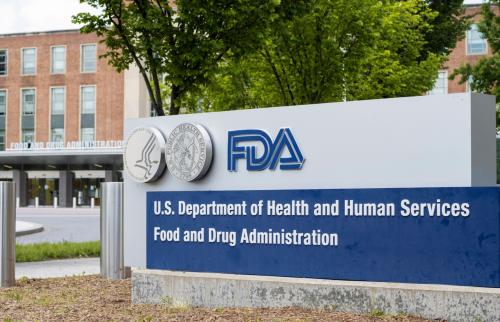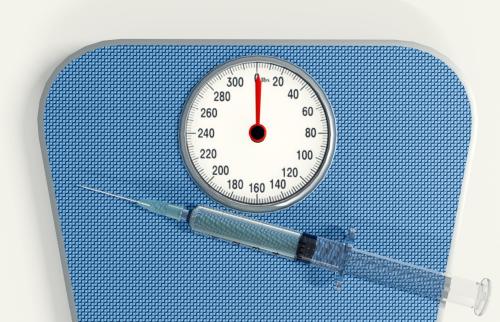There were 136.3 million emergency department (ED) visits across the U.S. in 2011. EDs are commonly singled out in the effort to reduce health care costs for two reasons: EDs tend to charge more, sometimes much more, than other settings for low-acuity conditions, and many ED visits could have been avoided through more effective care in other settings.
In the current fee-for-service (FFS) payment system, EDs are paid for each individual service provided. ED utilization has continued to grow as more people have gained health insurance through the Medicaid program or health insurance exchanges. Many alternative payment models (APMs) aim to change this trend by shifting payment away from volume and intensity, instead moving toward providing a per-case or per-person payment. A goal with these APMs is to support non-ED physicians to take steps to avoid ED utilization and inpatient admissions. For example, patient-centered medical homes enable primary care providers to set up care teams to provide more patient support, chronic care management, extended office hours, and better care coordination.
Clearly, such non-ED payment reforms have significant implications for EDs. With greater adoption of successful APMs, EDs may eventually see a reduction in visits and – to the extent that relatively straightforward, well-reimbursed visits are avoided – a reduction in net revenue. With many EDs already struggling to stay open, the downward pressure on ED visits and payments may create challenges for the critical role that EDs play in the nation’s health care infrastructure. A robust emergency medicine system has three essential roles in the health care system:
1. 24/7 care for the sick and injured.
EDs are the only care setting that has the resources and the immediate availability to provide care for critical illness and injury such as trauma, stoke, and acute myocardial infarction, and to evaluate patients with concerning symptoms. In addition, EDs are open around the clock to treat less serious health emergencies that happen when alternative care settings are closed.
2. Capacity to respond to public health emergencies, disasters, and terrorism
.
EDs are the primary point of entry into the medical system for public health issues, like influenza and Ebola, and disasters, such as the Boston Marathon bombing or Hurricane Katrina.
3. Fulfillment of the mandate to treat patients who need acute care regardless of whether they can pay. Under the Emergency Medical Treatment and Labor Act (EMTALA), nearly all EDs are required by federal law to provide medical screening and stabilization for patients, regardless of their ability to pay. As such, EDs act as a safety net for patients who are unable to access medical care in other settings.
Reducing inefficient use of ED care in a way that enables EDs to focus on these essential roles is necessary. However, payment reform could have significant unintended consequences for the quality of emergency care if APMs result in fewer net resources for EDs.
Reconciling the goals of payment reform with the essential functions of EDs
Payment reforms impacting ED care must reconcile the goals of supporting the vital functions of EDs while simultaneously reducing costs, and should focus on the following priorities:
Reduce demand for ED care without reducing support for critical ED functions. Many factors determine where people seek care, such as the severity of their illness, how fast they think they need to be seen, provider referral, and whether they have other options for care as well as social factors such as poverty, violence, and substance abuse. Often the most vulnerable choose EDs. If APMs are more effective in reducing demand from patients with lower cost visits and more generous coverage, EDs will be left with fewer resources to care for a more complex and high-acuity patient population. Payment reforms outside the ED should consider these implications and ways to reallocate net savings to address this challenge.
Enable health care organizations to support ED providers in their efforts to deliver effective patient care. ED providers are usually meeting the patient for the first time during their acute illness or injury and do not have full knowledge of the patient’s prior health history, current medications, and plan for care. This is particularly challenging when seeing patients with low health literacy who are unable to communicate this information. Poor interoperability of health information technology, poor usability of existing electronic health records, and limited coordination with a patient’s non-ED providers make cost-conscious care in the ED a challenge. Many primary care groups, accountable care organizations, health plans, and other health care organizations are implementing steps to improve information sharing and coordination. But, such “best practices” for supporting ED care in conjunction with payment reforms are not well established.
Increase the efficiency of ED care without placing patients at undue risk. Current U.S. ED care is practiced in a conservative manner: patients often receive tests, and are admitted to the hospital to “rule out” conditions even when there is a recognized low probability of disease. This results in many negative tests, but also picks up more subtle presentations of life-threatening disease. Effective ED care reform should seek to reduce more costly approaches to care while achieving the same, or better, health outcomes for patients. To achieve this goal, alternative approaches to payment for care within the ED may be helpful.
Moving toward effective payment reform for emergency care
With critical issues for public health at stake, payment reforms affecting ED care need to be carefully considered. These payment reforms should be disruptive, encouraging more appropriate ED use, better care coordination, and more effective and efficient care for ED patients. However, these payment reforms should not be destructive to the critical emergency care functions that EDs provide to their communities. Safety net EDs and rural hospitals are at particular risk for closing and are more likely to need additional support through payment reform. APMs should also support proven interventions that have been shown to reduce costs in the ED without harming patients.
Recent initiatives have taken steps to address these challenges. One example is the Washington State “ER is for Emergencies” program, which was developed after Washington Medicaid threatened nonpayment to EDs for non-emergency visits. The ER is for Emergencies program includes seven best practices: 1) create interoperable health information exchange (HIE) technology available in all Washington State EDs; 2) educate all patients about appropriate use of EDs, 3) identify frequent users of the ED and pre-hospital care, 4) develop care plans for frequent users, 5) implement narcotic guidelines to reduce narcotic seeking behaviors by patients; 6) participate in a prescription monitoring program, and 7) use feedback information.
In another example, the University of Maryland Upper Chesapeake Health system is creating clinical pathways to reduce care variation and standardize care delivery, using care plans for high-risk patients, and a physician call-back program to follow-up with discharged patients. They also created comprehensive care clinic to guarantee post-acute follow-up care to patients without a primary care provider, without insurance, or who have a high-risk follow-up. These reforms are supported through Maryland’s Global Budget Revenue system in which hospitals are given a set annual budget and shares in any savings below the allocated amount. Both efforts in Washington State and Upper Chesapeake hospital have resulted in greater efficiency of ED care delivery, lowered costs, and allowed EDs to maintain their core functions.
These examples suggest that reforms in payment and health care delivery involving EDs can reduce ED costs while strengthening ED care. But for payment reform to succeed, EDs should be considered thoughtfully and ED providers must be engaged. We discuss these issues, and others at the May 6 MEDTalk, “Reimagining Emergency Medicine: Moving to Integrated Care for the Ill and Injured.” Join us in person or via webcast to discuss how to move towards fully integrated care and address payment transformations on a larger scale to ensure physicians and facilities are supported to provide the best care to their patients.
The Brookings Institution is committed to quality, independence, and impact.
We are supported by a diverse array of funders. In line with our values and policies, each Brookings publication represents the sole views of its author(s).



Commentary
Can payment reform improve emergency care?
April 20, 2015